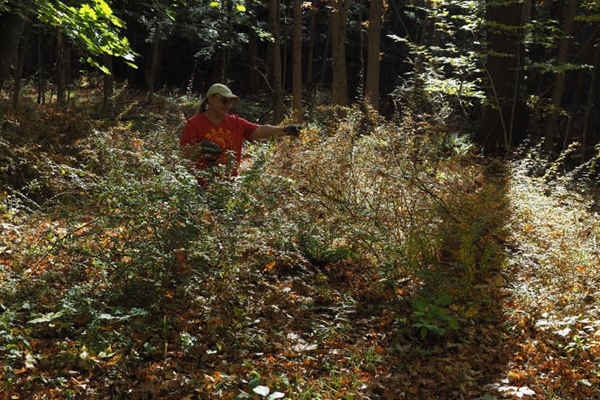
Black River Action Team Invasive Plant Management Day Targets Japanese Barberry Plants
Members of the all-volunteer Black River Action Team joined forces with the Springfield Rotary Club and the Springfield Trails Advisory Committee recently on an "invasive plant management day." While the bulk of the crew worked on plants along Paddock Road, which runs parallel with the Black River, several volunteers tackled the trails of Hartness Town Forest off Dell Road in Springfield. The target: Japanese barberry plants. Japanese barberry was introduced to the U.S. as an ornamental, because, well, it's so darned pretty. Unfortunately, the berries it produces are attractive to birds, which gobble them up and excrete the undigested seeds out in the woods. The plants grow in the wild, unmanaged and in dense thickets.
The spine-like thorns make a great habitat for mice and chipmunks, since predators are unlikely to pursue into the sharp thicket. These small mammals are a haven for ticks, which carry diseases such as Lyme Disease from the rodents to humans.
The goals of pulling Japanese barberry plants is to remove them from the forest, teach the community to recognize them on private property, and to replace the barberry plants with berry-bearing native plants that will provide food for the birds but not add habitat for ticks.
Many thanks to Jeff Mobus, Jeff Semprebon, and John Bond for their elbow grease today; to retired forester Barb Schultz for guidance; and to Jim Fog and the Springfield Trails Advisory Committee for handling the logistics. They had a second team working on other invasive plants on Paddock Road. Learn more about Japanese barberry and other invasive plants here: vtinvasives.org/invasive/barberry-japanese.
Contact the Black River Action Team by email at [email protected] or by leaving a message at (802) 738-0456.
Photos: BRAT Director Kelly Stettner in thicket of barberry. Credit: Jeff Semprebon.
Email us at [email protected].


